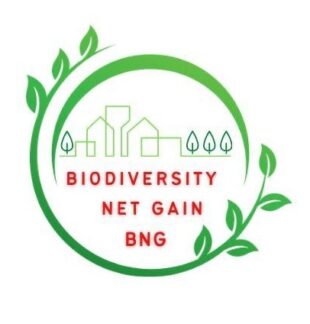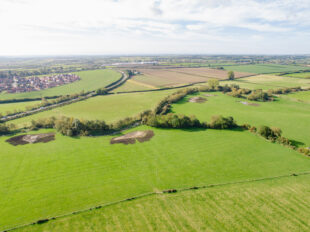
As we set foot on the path to implement one of the important nature recovery policies outlined in the Environment Act, a spectrum of emotions washes over us – from excitement to the daunting task of navigating this new terrain. In this guest blog, David Sutherland, Environment Act Readiness Manager at Buckinghamshire Council and Ed Lockhart, CEO of the Future Homes Hub share their thoughts on the challenges and opportunities that lie ahead.
David Sutherland, Environmental Act Readiness Manager, Buckinghamshire Council
Overwhelming and complex, or exciting and transformational?
We are probably feeling a mixture of these as we embark on delivering one of the key nature recovery policies in the Environment Act. Biodiversity net gain (BNG) is certainly a tremendous opportunity for local authorities to deliver lasting change as part of a vision emerging in Local Nature Recovery Strategies (LNRS).
Buckinghamshire Council has embraced this opportunity. We were an early BNG adopter and a pilot LNRS council, this is helping us understand the important relationship between these two policies.
We have put in place a clear local vision and framework to support mandatory BNG. This together with templates and local guidance, will make sure it delivers the best for nature recovery, as well as the people of Buckinghamshire. Yes, we have had to adapt and overcome problems, but this comes with the implementation of any new policy.
After months of preparation, with the excellent support from the Planning Advisory Service, the results are starting to be seen. The development management system has adjusted to enable us to determine planning applications with BNG and secure appropriate management and monitoring.
Partnerships are forming between land managers and local off-site BNG providers. Legal agreements are about to be secured for two large habitat banks to serve local development off-site BNG needs.
We have set out our role as a regulator of off-site provision, ensuring the right habitats are created in the right places to the correct standards.Looking ahead, we need to be able to forecast the amount of demand for off-site BNG in terms of habitat type in relation to our local plan allocations. Certainty of resourcing for local authorities for delivery and monitoring of BNG will also be key. It will not all be in place on day one, however I’m sure the systems will evolve for the better as this long-term policy settles into place.
Frustrating at times maybe - but it’s exciting to be a small part of this transformational policy.

Ed Lockhart, CEO of the Future Homes Hub
Our purpose is to support the new homes sector on the journey to building net zero and nature positive homes and places. We had our inaugural Future Homes Conference on 22 November with nearly 400 senior representatives of the sector. Despite a difficult housing market, the energy and appetite for building a generation of more sustainable homes and places was loud and clear.
Put simply, BNG means that as we build the homes we badly need as a country, we will also, home by home, contribute to improving biodiversity. This is a brilliant concept that we can and should all get behind.
However, there are some very real challenges in translating concept to reality on the ground. BNG involves coming up with a means to measure biodiversity in units, calculating losses and ensuring gains are at least 10% higher.
BNG involves developing a new market for off-site biodiversity units, working more closely with the landowning and managing sectors than ever before. It also involves creating new legal agreements to make sure gains are secure for the longer term. It is fundamentally important that the market is well governed and trusted by all parties.
The original timescales set out for agreement did not anticipate various challenges such as the COVID-19 pandemic. So, the timescales are also tight. However, we must all focus on the longer-term prize of nature friendly development and work together to overcome these challenges.
To play our part, we have brought together not just the development community but also local planning bodies, the landowning and managing community to work with Defra, DLUHC and Natural England to resolve shared priorities.
We are launching the Biodiversity Unit Finder to help connect landowners and unit providers directly with the whole homebuilding community, free to use.
We will be building on our initial BNG guidance, putting on clinics for SME builders. We also plan to collate case studies in a similar format to our low carbon demonstrator map to share experience across the sector.
We are constantly struck by how BNG is uniting different stakeholder groups to achieve the win-win outcomes of the developments we need as a country and vastly improved biodiversity. It will be vital during the months ahead that we continue to work in this collaborative spirit to navigate any bumps in the road and collectively reap the longer-term benefits.
2 comments
Comment by Giles Watts posted on
My biggest concern with BNG is that the system will be "gained" by developers and that the quality of land will be deliberately degraded before building starts (trees cut down, ponds removed, hedges trashed etc.) so that the apparent net gain is higher. This is already common practice in many developments I have seen, so what it going to stop it happening before the baseline survey is carried out ?
Comment by Mike Priaulx posted on
Paragraph 017 "How do existing local policies apply following the introduction of mandatory biodiversity net gain"
of "Draft biodiversity net gain planning practice guidance" (published 29/11/23)
is unclear that separate policies relating to biodiversity measures excluded from the BNG metric, e.g. species features such as swift bricks, bat boxes and hedgehog highways (which are promoted by NPPG Natural Environment paragraph 023),
should still be implemented.
Especially the final sentence of paragraph 017 which I believe applies to ALL developments but the way it's worded suggests this only applies to exempt developments.
I believe the Government wants such policies implemented, based on NPPG Natural Environment, and repeated comments made during 2023 in response to the swift brick petition and debate on 10/07/23 in Westminster Hall.
But reading paragraph 017 without any context, I would assume that the Government is not permitting such policies except for BNG-exempt developments.
Please can it be clarified that policies that apply to biodiversity measures excluded from the biodiversity metric should still be implemented.
Many thanks.